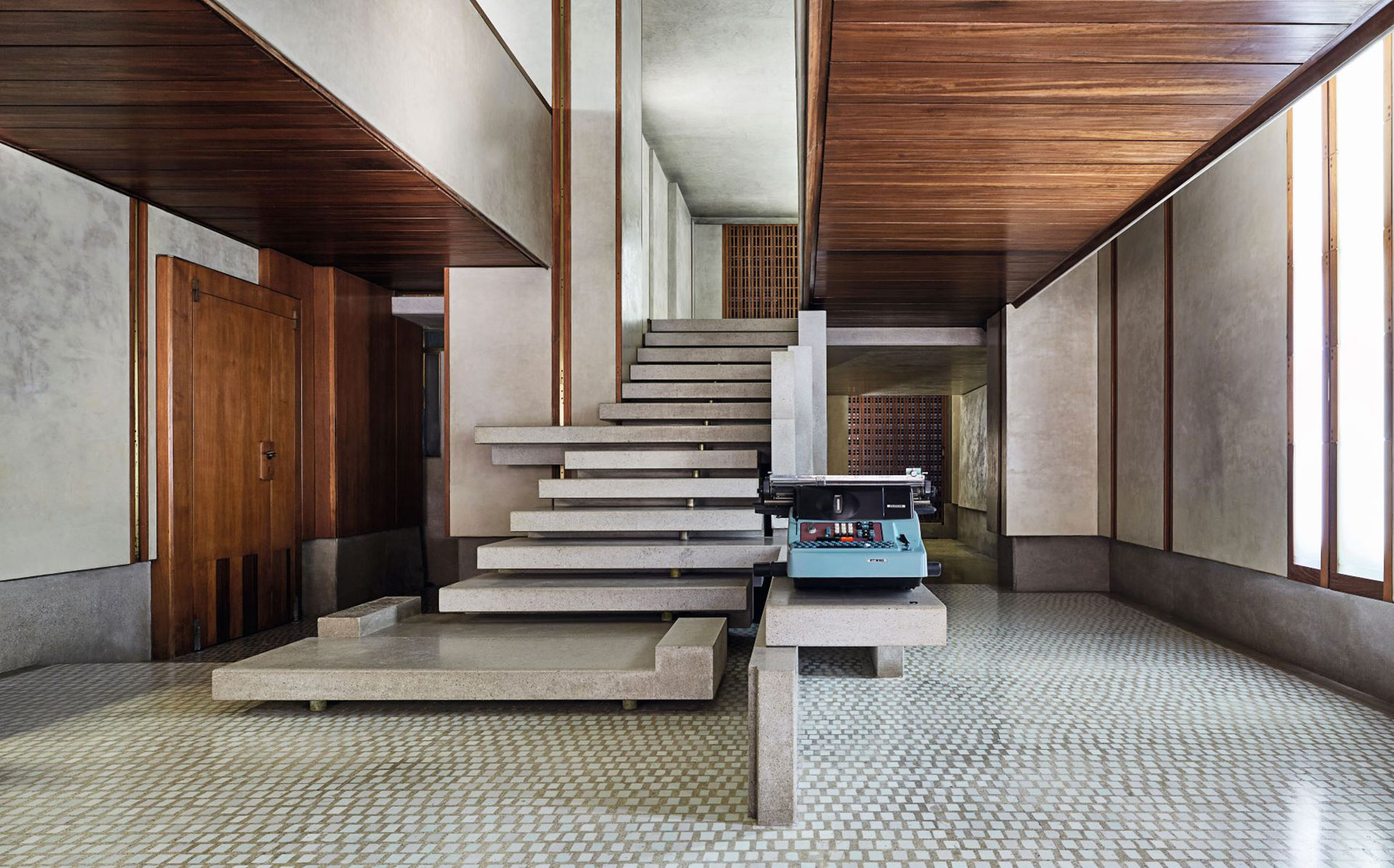Powerful, dynamic, and at the same time light, the Aurisina marble staircase with its steps seemingly suspended in the void is the fulcrum of the Olivetti store, designed by master Carlo Scarpa located in the wing of the Procuratie Vecchie, in St Mark’s Square in Venice.
Commissioned by Adriano Olivetti in 1957 and inaugurated in 1958, the project develops along a path visible from the large windows overlooking the porch of the Procuratie. For its realization Scarpa combined, thanks to refined and wise construction techniques, marble and stone, marmorini and surfaces in lime and mosaic, different wood essences, metals and crystals, “so as to embed the fifth floor of the Marcian audience in a real boîte à malice.” In addition to the Aurisina marble for the staircase, the research of materials made by the master results in the combination of rosewood, African teak, metals, and stones that coexist with traditional Venetian stucco and mosaics revisited in a modern style.
From the atrium animated by a Nude of Viani in gilded bronze placed on a bathtub in black marble of Belgium, one can access the main room that leads to the staircase, consisting of carved steps superimposed on each other. After ascending, you arrive upon two landings on the upper floor, which are home to a small office and part of the exhibition of the historical typewriters and Olivetti calculation machines.
Carlo Scarpa, writes Patrizia Piccinini in the recent volume of “Carlo Scarpa. Beyond the matter”, edited by her and photographer Lorenzo Pennati for Rizzoli, «He is one of the few architects capable of generating powerful emotions. When you enter one of his spaces, you immediately feel the magic of volume, matter, and light. You notice it when you cross for the first time the door of the Olivetti Store in Venice, with its staircase so powerful but at the same time light or gaze upon the hall of Scarpiana Museum Gipsoteca Canova Possagno, flooded with light. Each project seems immersed in a suspended timelessness, in which the power of the architecture is reflected in lines, surfaces, and volumes, resulting in the classic monument of the Greek temples».
After years of negligence and neglect, Carlo Scarpa’s project returned to the city in 2011 thanks to the intervention of Assicurazioni Generali, at the request of the FAI.
Credit photos: Lorenzo Pennati
by Sabrina Sciama



